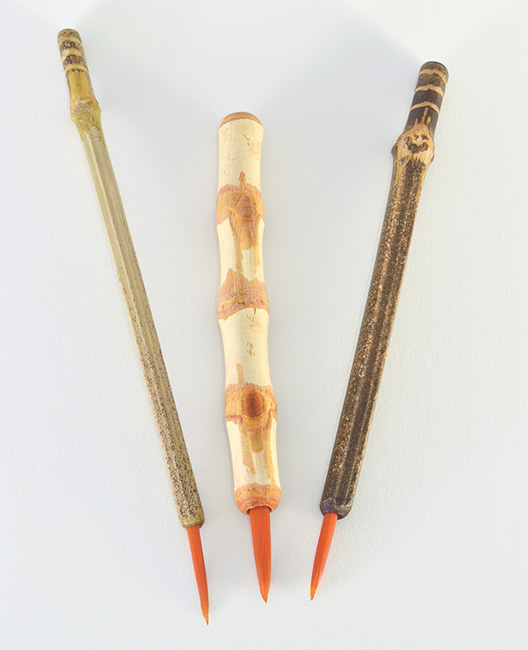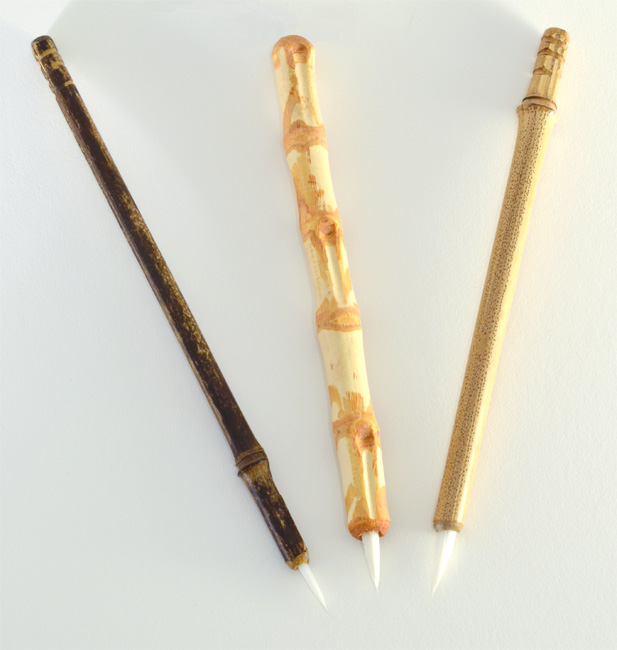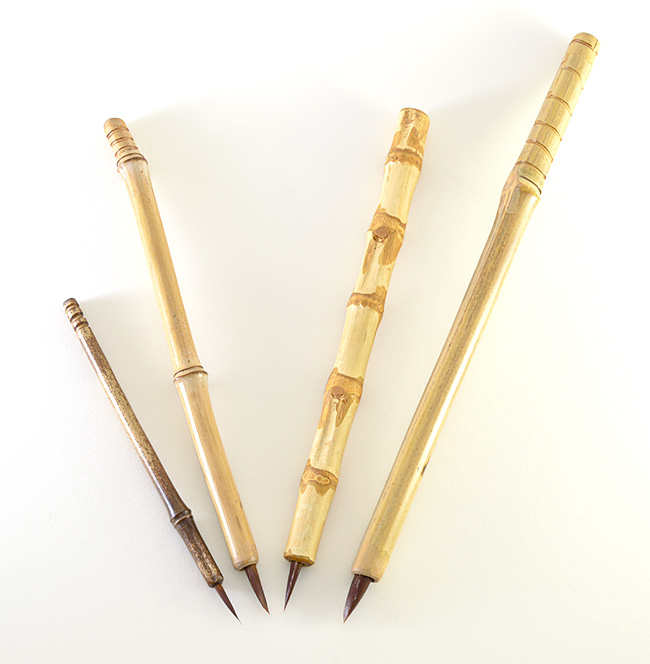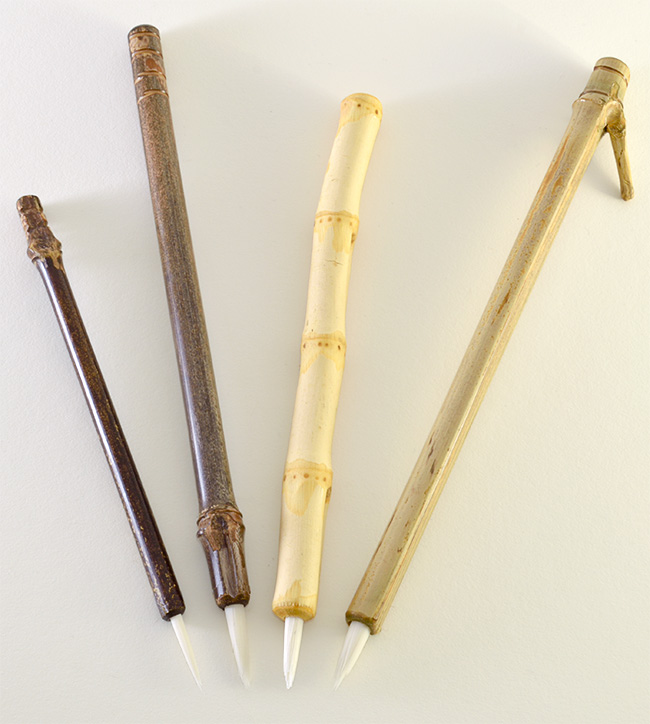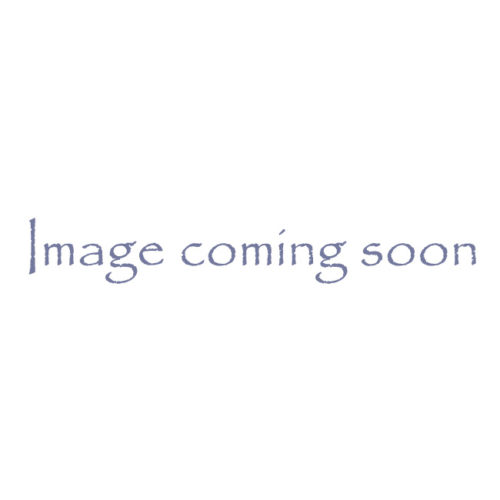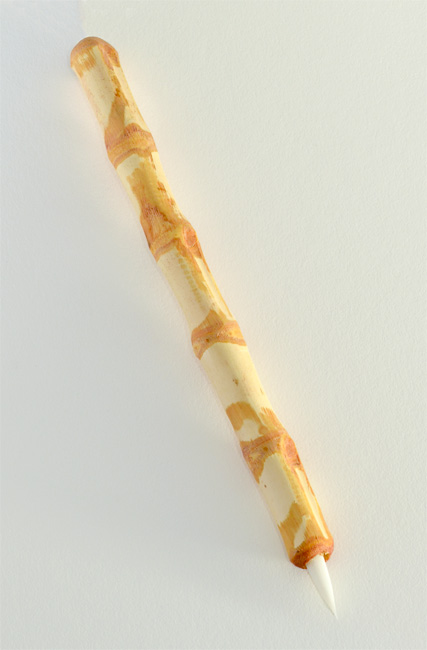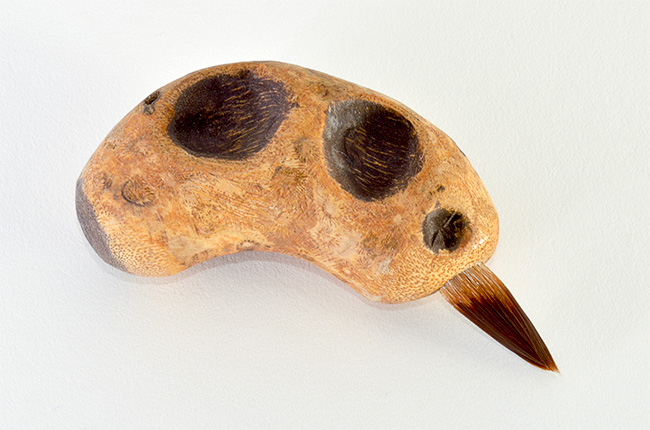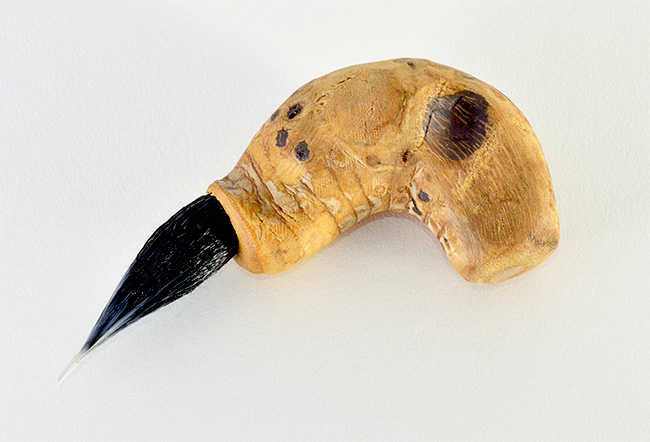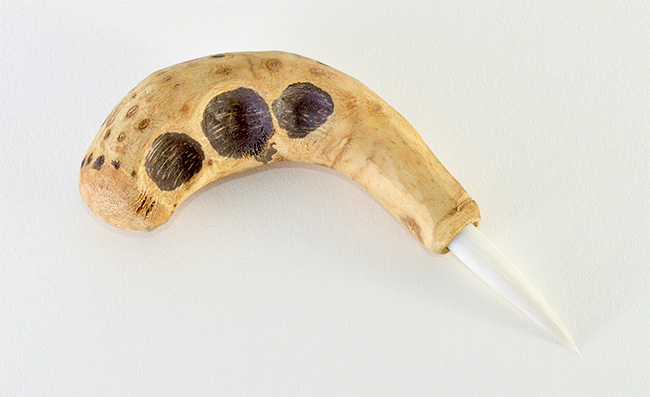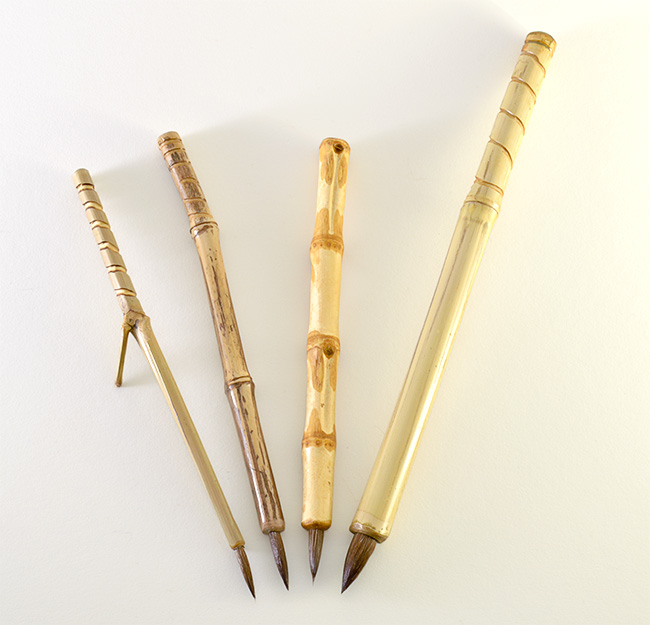Founded on Quality and Innovation
My brushes are the result of a combination of influences. First, i use handle materials which are uniquely comfortable, help avoid fatigue, and which are unlike anything else.
Second, the bristle materials i use are designed to out-perform other brush bristle materials in a number of ways. It is why i use 16 different types of materials for bristles. Some paint is water based, some paint is based on all kinds of solvents and resins. Some paint and ink are very thin and water like, and some is various viscosities of goo. And everything in between.
My brushes are designed to hold more painting media. They are more responsive. This makes them easier to use for all kinds of work. Most produce fine tips. This helps you to do detail work with all kinds of brushes. They are made from the highest quality materials i can get. This helps them to last longer and be more reliable in their behavior.
When I started the research for making paintbrushes my first step was to learn as much as i could how other brushes are made, and what offerings are found at area art stores. Seattle has a large collection of Art stores and i visited several to see how brushes are presented, and what the differences are. I bought a lot of brushes, worked with them, and took many of them apart to see how they were made.
I quickly noticed that the entire paintbrush industry is very mature. The industry is so mature that there is very little innovation to be found. The industry has been doing the same things for a long time and it appears most of the big name manufacturers such as Escoda© and DaVinci© have at one time or another called using a different color of paint on their brush handles a form of innovation. Some of these brushes are really well made and some are not really well made. All have had generations of what is called value engineering done on them. That is a process of reducing the cost as far as possible.
Well. Ok.
The result of the research taught me a lot about brush design. What is striking about the design are two major details. The first detail is that many brushes are made from a poor choice of materials, with a goal of being inexpensive. Understandably anyone wants to spend as little as needed. This is basic cost efficiency. But the quest to squeeze the last penny out of cost has left the user of these brushes with little by way of choice and less by way of quality.
The 2nd major detail is some brushes work better than others with certain types of paints and inks. While true, there is little offered by way of nuances for the offerings. Many manufacturers have opted to drive down the brushes’ quality and instead present brushes with only lower price points instead of higher quality. These brushes tend to not work very well and wear out pretty quickly. Brushes of this type are like like a restaurant that offer small portions and provides poor service. But the cost is right.
Or is it?
On the detail of price points, i found that some manufacturers sell their brushes to the retailer for about 25% of the retail cost, while claiming the retail cost is 300% of the wholesale cost. The manufacturer does this so that the retailer can put the brushes on sale, and some customers will be lead to believe the brushes are a good value due to the savings they think they get. In other words, when a brush has a MSRP of $75 and the seller is offering it to you for $9.99 you will naturally think you’re getting a good deal. Often you are not getting the value you may think your are.
No matter what you pay, you want a brush that will help you. But most of the brushes on the market will leave you challenged and even hobbled because the brushes are poor performers.
My research showed there is a need for innovative design and high quality paintbrushes.
I’m going to talk a little about how my brushes are different.
First my brushes are all very high performance.
They are all hand made by myself, in my world wide brush making studio facility located in Greenwater WA.
In addition to being high performance I offer is a range of brushes which offers capabilities other brushes don’t.
For instance, a lot of people know that goat hair brushes are used widely with most water and ink based paints including underglazes. Goat hair holds a lot of paint. If it is properly cleaned and uniform, it can provide buttery smooth delivery and it lasts as long as goat hair can last. Goats are tough animals and the brushes do last a long time.
That is the good news.
Goat hair is not very springy, and while you can get it to make a nice point, the point is too soft for all but the most sensitive hand. It takes almost super human skills to work on the tip of a goat hair brush. Plus Goat hair is soft and provides little feedback.
While Goat hair is the most popular, it’s frustrating to use goat hair when you are trying to do fine detailed work.
I solved this problem by 1) blending a small amount of fine grade, tapered and textured synthetic fibers and 2) i use what is called double dressed Goat hair. The combination provides all of the pluses of goat hair, along with the extraordinary additional capability of a hair-fine tip that is easy to use. Another plus is the combination adds some nuanced feedback to the brush and that makes it easier to do all kinds of work! The brush provides the silky smooth delivery of goat hair. And, when working on the tip of the brush, even the 2″ long bristle makes it easy to do ultra fine detailed work. I’m about the only brush maker on the planet who offers this.
This innovation led to my goat hair and synthetic fiber blend brushes becoming my most popular brush line.
Below is one of my best selling sets of this kind of brush. The brushes are also sold individually and in bristle lengths ranging from about 3/4″ up to about 2″.
Another detail that stood out in my research is that most paintbrushes don’t provide much feedback for the user. To work on the tip of the brush you usually have to intuitively know where the tip is, because you can’t tell by using the brush. Some have a knack for this but most don’t. I solved this problem by providing a nice range of tactile feedback in my brushes. Roughly half of the 16 different types of brush materials i use are offered for their combination of feedback and performance. I’m the only one to offer this wide assortment. The reason i do it is it helps to extend your skills!
I offer two general categories of brushes, which are natural hair brushes and synthetic fiber brushes. Plus of course some blends, such as the Goat and Synthetic blend mentioned above. My brushes range from very soft to very stiff. What thousands of visitors to my Art Fair exhibit have told me is that the overwhelming majority really enjoys my springier brushes. The easier the brush is to work with the more quickly your skills will excel by using a more responsive brush.
At the outset i offered only one synthetic bristle, my Synthetic Sable line, and a smaller assortment of natural hair brushes. The Synthetic Sabke quickly became my 2nd best seller, and remains there. While it was originally intended for people who use solvent based paints, everyone loved it. Due to its popularity, i added 3 more synthetic brushes, being my Brown Synthetic, Orange Synthetic, and Stiff White Synthetic. Examples of these are below.
The Synthetic Sable is the softest; next is the brown, orange and stiff white, with each being a tad springer-er than the other. As a note, the synthetic sable and brown are the most popular.
Another innovation comes from the use of bamboo for the handle material. Bamboo is wider and lighter than wood handles found on commercial brushes. Many have commented that a wider handle relaxes their hands. The effect of a larger brush handle tends to relax the hand and arm all the way to the shoulder. This is because the muscles tend to relax when holding a slightly bigger object. The brush handles are also not perfectly round, and many have a lot of variations. The irregularity actually goes a long way to relaxing the hand. When i’m painting, i’ve used my brushes for up to all day, and the difference between the bamboo handles and the smaller diameter commercial wood handles is astonishing. For one thing, i don’t think i could use a commercial brush all day without cramping my fingers, hand, arm and shoulder way beyond reasonable comfort.
Cramping is not the case with Bamboo cane or Wangi Bamboo handles. My brush handles will help relax your hand. My Wangi handles take it to the next level. Both bamboo and Wangi are soft to the touch. They both have a little bit of flex to them. so if you tense your hand, these materials will give. They are soft to the touch and verrrrry light. People love them! By offering my brushes with bamboo handles, you actually end up with a more comfortable brush.
And a step beyond this in comfort is with my hand grip handles. These are game changers for some. They are great for anyone who wants to paint with a very relaxed hand grip. Also some with arthritis or injuries love these brushes. I combine these grips with my best bristle material to create a very enjoyable brush.
Another specialty brush family I offer is made from Pony hair. I noticed that some artists have a very quick hand. Most brushes can’t deliver paint or ink fast enough to keep up with them. Pony hair is an exception. It holds more paint than my sables do, and it can keep up with even the fastest painter. Pony hair is very soft, so this brush is ideal for those who have a fast hand and light touch.
I can go on about each offering. The items above examples of why i offer the range of materials i do.
Each bristle choice is designed to help you have a more responsive brush. That means you’ll enjoy working my brushes more than any other kind of brushes. That is why i offer a satisfaction guarantee.



